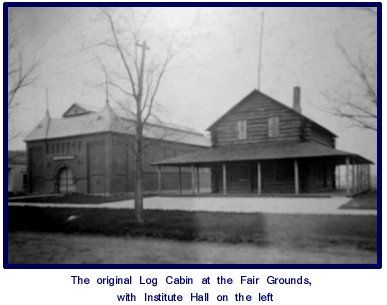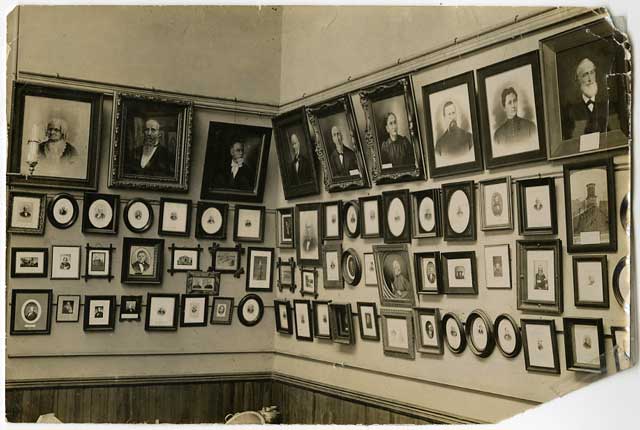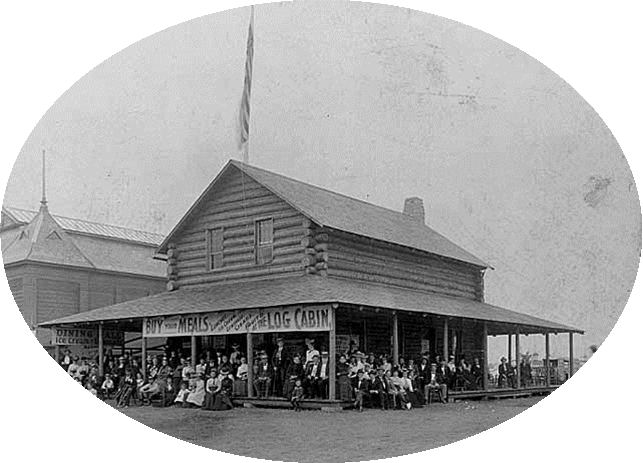Our History
The "Old Settlers", the original name of our organization, was first a loosely knit group that met at Fort Snelling annually at harvest time to exchange experiences with the elements, locusts, and interactions with the local tribes. This usually took place after their crops and produce were sold to traders. The first year that the group decided to call themselves the “Old Settler's Association” was in 1848. It was that year that a meeting was held in the Henry Jackson store at which local and state politicians debated the benefits of creating a new territory to be known as Minnesota. This came to pass a year later. The back room of the Jackson store became their meeting place at irregular intervals until 1850. They then decided they would meet annually at the State Fair which was to be held at Fort Snelling in 1860. From that time on, they met informally at a picnic held on a certain day during Fair time, there were no dues collected, nor were permanent officers elected. This continued for some years.
It was not until May 1897, that the Old Settler's were officially organized and became functioning as a semi-state organization. Their main purpose being to preserve and perpetuate the memory of the early settlers in Minnesota Territory through the collection of artifacts, portraits and records pertaining to life in Minnesota prior to Statehood. Colonel Alvaren Allen, who had been a guiding hand in the loosely knit group, was officially elected our first President. The names of the men who followed as officers of the Minnesota Territorial Pioneers reads as a "Who's Who" in Minnesota history. They were truly ''Maker’s of Minnesota". With the dropping of the name of "Old Settler's Association" and adapting of the new name "Minnesota Territorial Pioneers", a new era began in the history of our group. The first effort was made to find a permanent headquarters for the Pioneers. Inasmuch as the Old Settler's had met at the Fair for many years and also that many members of the State Agricultural Society were, or had been, members of the Old Settler's Association, it was decided at the urging of George H. Hazzard, an Old Settler and County Commissioner, to try to locate our headquarters at the State Fair Grounds. This attempt was successful. The relations between the Fair Management and the Pioneers has been beneficial to both groups ever since.
It should be mentioned here that George H. Hazzard became the Secretary of the Minnesota Territorial Pioneers in 1903. He had been the prime mover for permanently locating the State Fair at its present location, which a portion of was formerly the Ramsey County Poor Farm.
The 1900 State Fair marked a milestone for the Old Settler's. It was that year that construction began on Pioneer Log Cabin. Several members donated their labor and money for this project which was under the Supervision of A. L. Casler. Edwin Clark organized the project. Members of the Old Settler's Association also landscaped and planted the trees still standing in front of the present Pioneer Log Cabin.
Below is a resolution adopted by the State Agricultural Society of Minnesota at the Annual Meeting held at Saint Paul, January 15-17, 1930:
WHEREAS in the death of George H. Hazzard, secretary of the Minnesota Territorial Pioneer Association and a life member and enthusiastic worker in our own Society (the man to whom more than any other one man is due credit for the location of our present State Fair Grounds upon their splendid site, a man who through many years has given freely of his time and talents toward the upbuilding of our institution) we have lost a true and trusted friend.
BE IT RESOLVED that we hereby express our regret at his passing and extend our deep and sincere condolences to his family,"
I hereby certify that the above resolution was adopted January 17, 1930, by the State Agricultural Society of Minnesota in annual meeting assembled.Dated at Saint Paul, Minnesota (Attest) RAYMOND A,LEE,
January 24, 1930 Secretary
For the past 19 years I have visited Pioneer Portrait Hall daily during Fair week. I have thus had a better opportunity than most of you to get reliable information as to the manifest interest of those who visit Portrait Hall or go there to show friends pictures of deceased relatives or persons of historic importance. You cannot imagine how reverent these folks act in the presence of these portraits. Men from nearly every civilized country frequently remove their hats while looking at pictures. Why are they so interested? Hundreds ask questions. Many have shown particular interest in the large variety of frames. How do you account for this manifest interest in pictures of strangers? I think they recall some incident in the lives of these sturdy characters which grip the heartstrings and sets in motion thoughts pleasant to contemplate.
Today, please try to realize more than heretofore that your group are custodians of a historically valuable and unique collection. No other organization can produce; or hand down posterity, as fascinating a memorial to the worthwhile qualities which produced such nobility of character.


